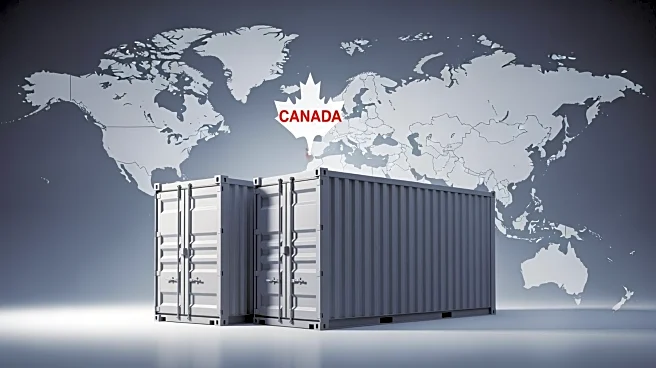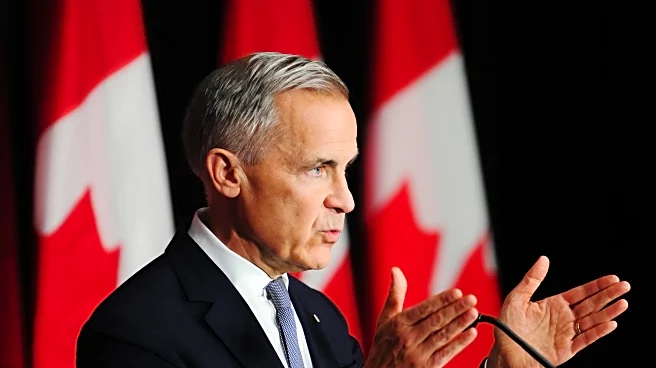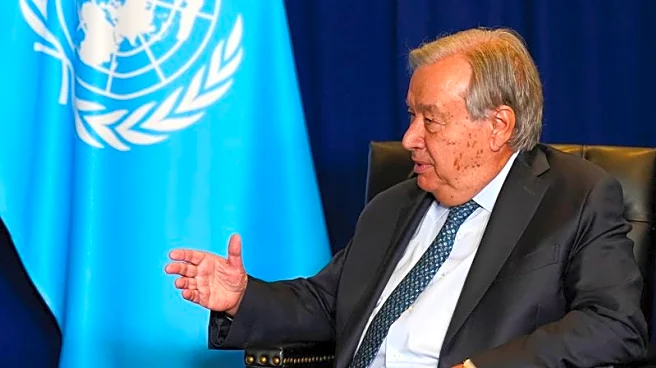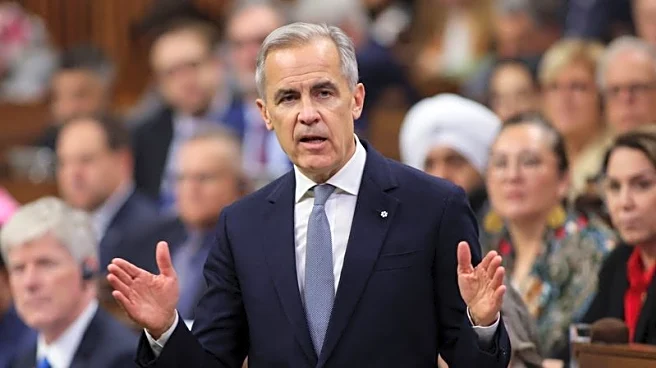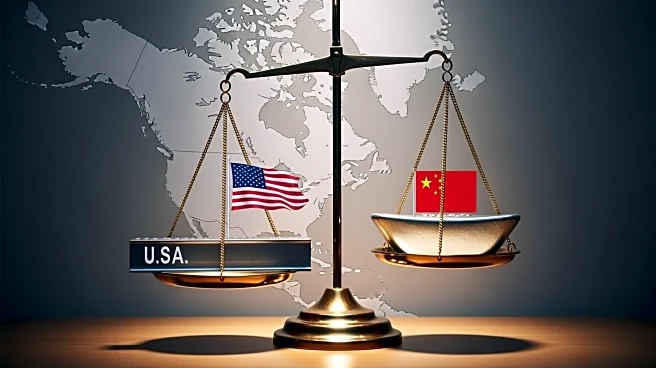What's Happening?
Canadian Prime Minister Mark Carney announced plans to double Canada's non-U.S. exports over the next decade. This decision comes in response to U.S. tariffs affecting key Canadian industries such as autos,
steel, and lumber. Carney emphasized the need for Canada to diversify its trade relationships, citing the uncertainty caused by U.S. trade policies. The move aims to reduce reliance on the U.S., which currently accounts for over 75% of Canada's exports.
Why It's Important?
The shift in Canada's trade strategy underscores the impact of U.S. tariffs on international relations and economic stability. By diversifying exports, Canada seeks to mitigate risks associated with its dependence on the U.S. market. This decision could influence global trade dynamics and affect industries reliant on cross-border commerce. The strategy may also prompt other countries to reassess their trade policies in light of changing geopolitical landscapes.
What's Next?
Canada's efforts to expand trade with countries like India and China may lead to new economic partnerships and opportunities. The upcoming budget release on November 4 will provide further details on Canada's trade strategy and economic priorities. As Canada navigates these changes, stakeholders will monitor the impact on domestic industries and international relations. The evolving trade landscape may require adjustments in policy and business practices.
